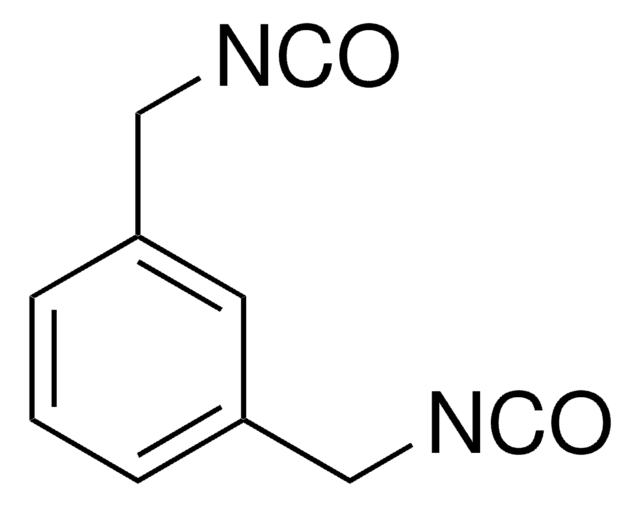256439
4,4′-Methylenebis(phenyl isocyanate)
98%
Sinónimos:
4,4′-MDI, Bis(4-isocyanatophenyl)methane
About This Item
Productos recomendados
Quality Level
assay
98%
form
solid
reaction suitability
reagent type: cross-linking reagent
bp
200 °C/5 mmHg (lit.)
mp
42-45 °C (lit.)
density
1.18 g/mL at 25 °C (lit.)
storage temp.
−20°C
SMILES string
O=C=Nc1ccc(Cc2ccc(cc2)N=C=O)cc1
InChI
1S/C15H10N2O2/c18-10-16-14-5-1-12(2-6-14)9-13-3-7-15(8-4-13)17-11-19/h1-8H,9H2
InChI key
UPMLOUAZCHDJJD-UHFFFAOYSA-N
¿Está buscando productos similares? Visita Guía de comparación de productos
General description
Application
- Polyurethane cationomers, that are applicable in medical implants.
- A prepolymer for preparing self-healable polyurethane elastomers.
signalword
Danger
Hazard Classifications
Acute Tox. 4 Inhalation - Carc. 2 - Eye Irrit. 2 - Resp. Sens. 1 - Skin Irrit. 2 - Skin Sens. 1 - STOT RE 2 Inhalation - STOT SE 3
target_organs
Respiratory system
Storage Class
11 - Combustible Solids
wgk_germany
WGK 1
flash_point_f
411.8 °F - closed cup
flash_point_c
211 °C - closed cup
ppe
dust mask type N95 (US), Eyeshields, Faceshields, Gloves
Certificados de análisis (COA)
Busque Certificados de análisis (COA) introduciendo el número de lote del producto. Los números de lote se encuentran en la etiqueta del producto después de las palabras «Lot» o «Batch»
¿Ya tiene este producto?
Encuentre la documentación para los productos que ha comprado recientemente en la Biblioteca de documentos.
Los clientes también vieron
Nuestro equipo de científicos tiene experiencia en todas las áreas de investigación: Ciencias de la vida, Ciencia de los materiales, Síntesis química, Cromatografía, Analítica y muchas otras.
Póngase en contacto con el Servicio técnico










